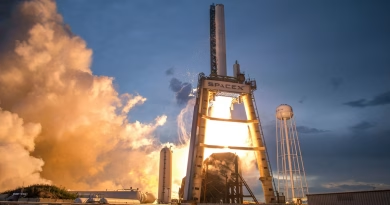Google Veo 3 Just Raised the Bar for AI Video—Now What?
We’ve seen AI write code, paint portraits, clone voices—and now, direct movies.
Google has officially unveiled Veo 3, its most advanced AI video generation model to date, and it’s not just an upgrade—it’s a flex. With frame-level control, text-to-video prompts, and cinematic fidelity that rivals professional editing software, Veo 3 is pushing AI video into territory once reserved for high-end studios.
This isn’t just a novelty. It’s a moment.
What Makes Veo 3 Different?
Google Veo 3 isn’t the first generative video model on the market—OpenAI’s Sora, Runway, and Pika Labs have all been making noise. But Veo 3 distinguishes itself in three key ways:
- Higher Fidelity Output:
We’re talking 1080p+ resolution with smoother motion and more coherent frames—even in complex, dynamic scenes. - Cinematic Style Control:
You can apply specific camera angles, mood settings, or visual styles just by tweaking the prompt. Want “drone-style footage over a futuristic city at sunset”? Veo understands that. - Longer Sequences, Better Memory:
Unlike many models that struggle to maintain context past a few seconds, Veo 3 handles extended video lengths with impressive continuity.
It’s not just creating clips. It’s creating scenes.
Why This Is a Big Deal
Veo 3 represents a leap, not a step. Here’s why the creative and tech world should care:
- Video is the final frontier of generative media.
Text, images, audio—they’ve all been AI’d. But video, with its layers of visual, spatial, and temporal complexity, was always the hardest nut to crack. Veo 3 cracks it cleaner than anyone so far. - The tools are getting closer to democratized filmmaking.
You don’t need a camera, crew, or budget anymore. Just a vision and a prompt. - It pushes the AI race forward—fast.
Google’s move isn’t just about Veo. It’s about outpacing OpenAI’s Sora and Runway ML in the competition for creator mindshare.
The Open Questions
Of course, Veo 3 opens the door to as many questions as possibilities:
- Will this kill traditional video production workflows?
- Will platforms like YouTube get flooded with AI-made content indistinguishable from real footage?
- How do we manage copyright, ethics, and manipulation in a world where anyone can synthesize footage of anything?
These aren’t side issues—they’re central to how this tech will unfold in real life.
What Comes Next?
Expect three things in the short term:
- Explosions in creativity — as indie creators, educators, and marketers start experimenting with cinematic-level visuals.
- Legal gray zones — especially around using likenesses, mimicking styles, or creating hyper-realistic fake footage.
- A scramble from competitors — OpenAI, Meta, and Adobe won’t sit still. Expect Sora upgrades, better integration from Runway, and maybe even Apple getting into the AI video game.
Olivia’s Take
Veo 3 isn’t just a better tool—it’s a signal. The AI video race is no longer about novelty. It’s about control, fidelity, and creative power.
And Google just made it clear: the bar is officially higher.




